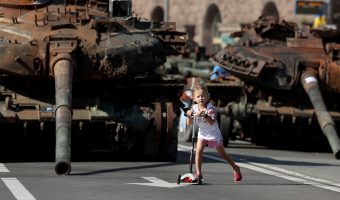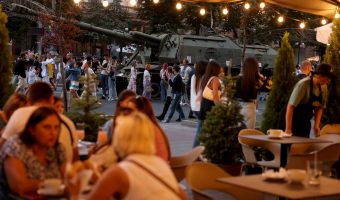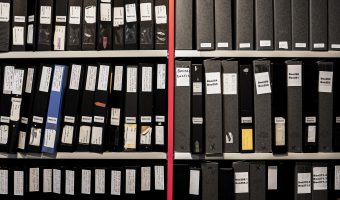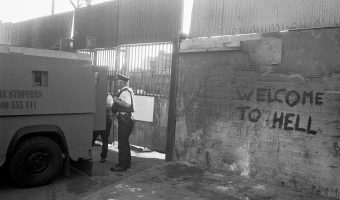Cordon Sanitaire
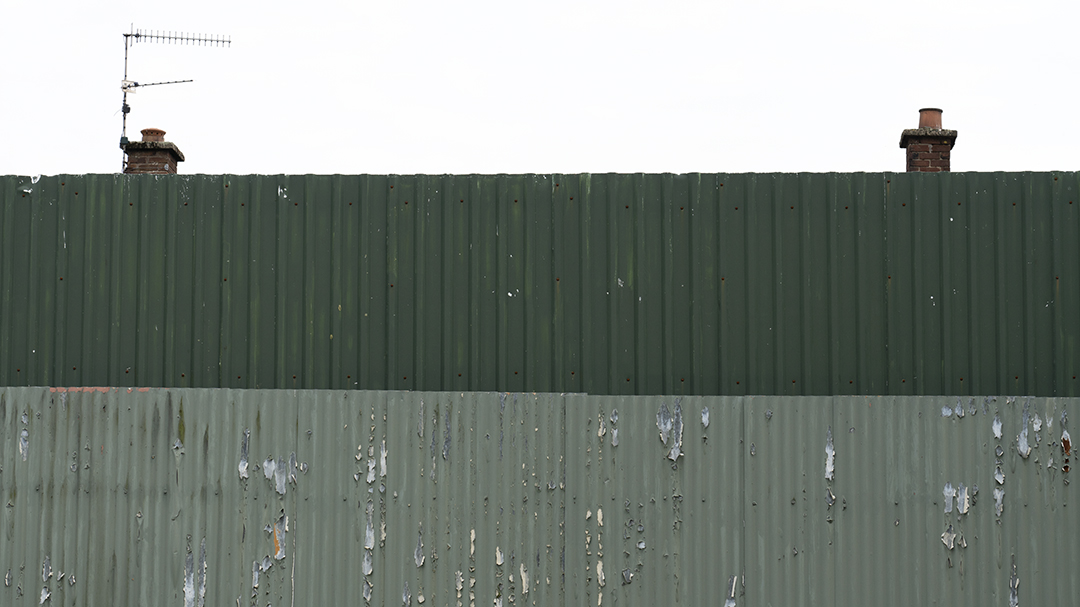
ESSAY
Cordon Sanitaire
Essay by Vicky Cosstick, written for the book ‘Cordon Sanitaire‘, published by Belfast Exposed
“When a city is redeveloped a pattern of life is laid down for at least a century. I find myself in disagreement at the proposals that the divisions in the community should be accepted as a feature of life which must inevitably persist for a hundred years or more.
It is an ugly thing to see a barrier of this kind in a city in the United Kingdom…. Its continued existence one moment longer than necessary creates an atmosphere of abnormality which is psychologically damaging.”
– Anthony Hewins, Working Party on Areas of Confrontation (1971)
Frankie Quinn published his first set of peacewalls photos (Interface Images, 1994) after the first IRA ceasefire. Then he was, he says, optimistic and believed the walls were temporary and that he was documenting them for posterity. Now it appears that people were naïve and unrealistic in their expectations of the peace process.
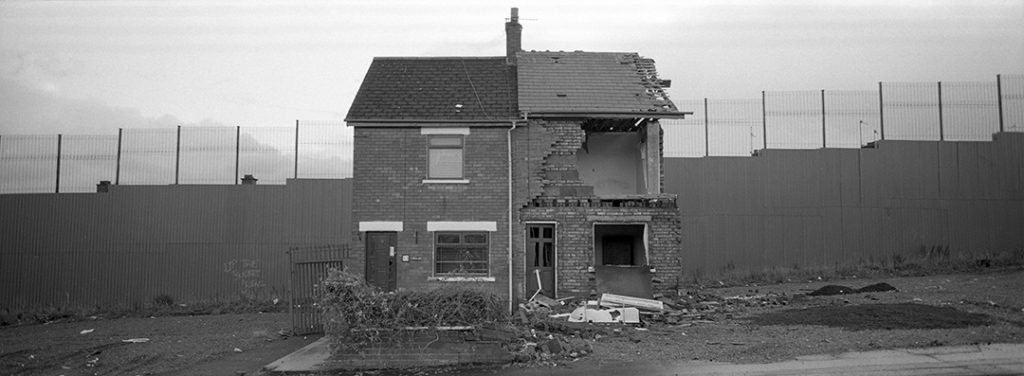
He went on to take two more complete sets of the direct, stark, dark black-and-white shots for which he is well known: Streets Apart (2004) and the pictures for our book Belfast: Toward a City Without Walls (2015). It was a happy, lucky day in 2013 that I wandered into the windowless, dilapidated but always busy and welcoming back office of the Red Barn Gallery on Rosemary Street to ask Frankie if he would take the photos for my text on the peacewalls, and characteristic of him that he immediately and generously agreed.
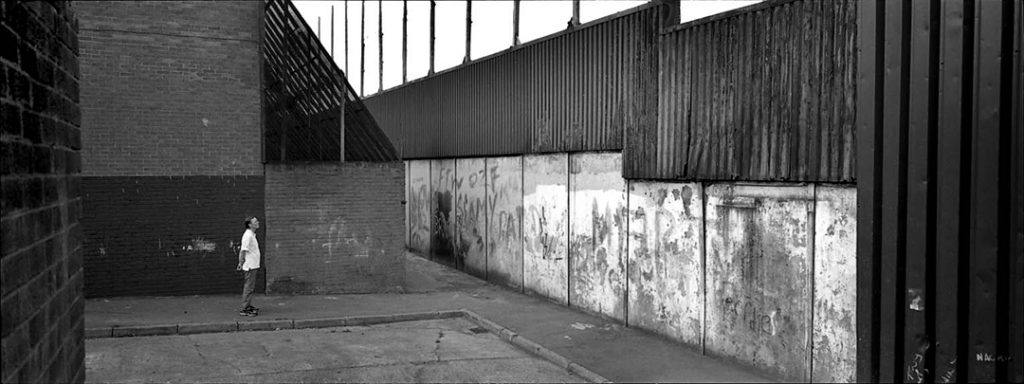
The Belfast Exposed exhibition “Cordon Sanitaire” nods at these previous collections of peacewalls photographs but is mostly made up of current work. At first sight these colour pictures, taken in sunlight, focusing on details of the interface walls, gates and fences, suggest a radical departure from his earlier work. Each image works by itself as a work of art; it is hard to guess where they were taken.
At the same time, there remains a strong documentary element to the work. While no people appear in any of the pictures, there are multiple traces of human intervention – a casually placed beer bottle, deliberate planting of ivy, graffiti and vandalism. The walls appear immutable but to those familiar with the walls, they are clearly changing all the time. Quinn has employed a forensic eye for change and growth, both in the structures themselves but also the amount of plants, weeds, and grass that have sprung up in and around the walls. Rust, graffiti, flaking paint, crumbling brickwork, the scorch marks of fires lit at their base: each image is quite unique and yet together they form a coherent essay on growth, decay and transformation. The walls appear benign, embracing and embraced by the streets. It is as if they have themselves taken root in the city, becoming a habitat for the weeds and ivy, a canvas for the graffiti. By focussing on the details, Quinn’s pictures draw our attention to how the walls are now, decades after their construction.
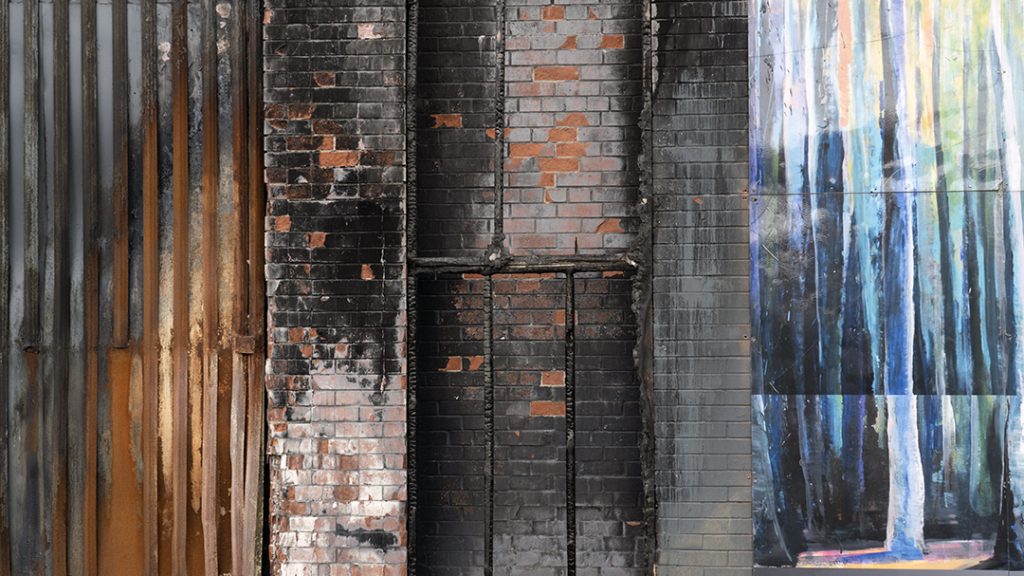
There is great integrity both of content and process to Frankie Quinn’s work. Born and continuing to live in the completely interfaced enclave of Short Strand, he says his motivation for the work is personal. He grew up with the walls and they affect his life daily. The images are carefully thought out essays in colour and composition — Quinn has been converted via his recent Master’s in fine art to digital and colour work, but he still never crops his photographs and editing is minimal. Like many a classical landscape artist, he needed to return many times to a chosen site to seize the precise light and stage of foliage he wanted.
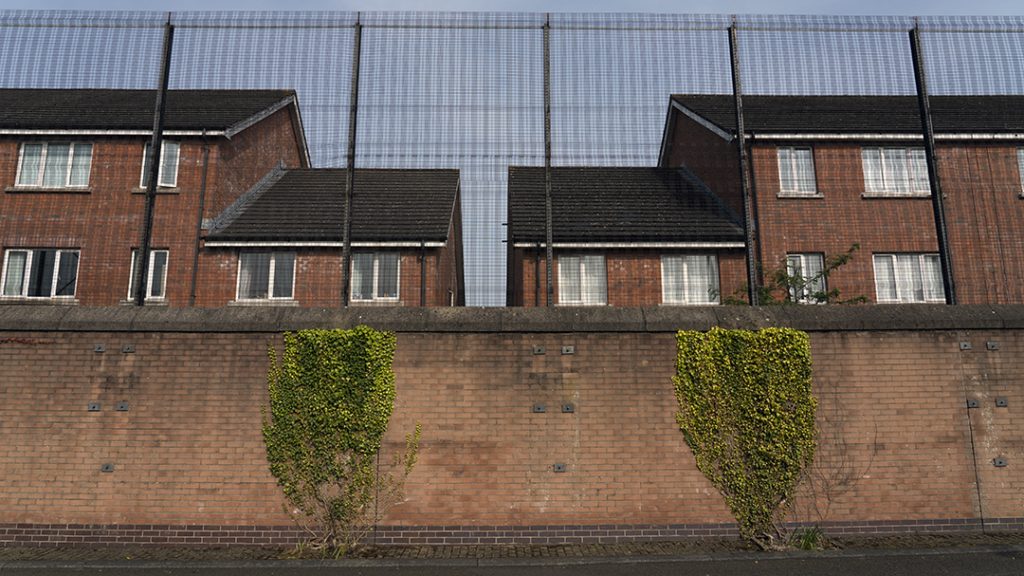
There are deep ironies consciously and unconsciously implied by the exhibition. A “cordon sanitaire” originally denoted a physical barrier to stop the spread of infection. The word sanitaire implies health, a lack of disease. But the interface areas are profoundly unhealthy places, places of dis-ease, with the highest levels of mental and physical illness, addiction to illegal, prescription and non-prescription drugs, levels of suicide and depression, in Northern Ireland. The pictures are beautiful but the stubborn presence of the walls is insidious. Residents persist in believing that the walls keep them safe but in reality, they are entrapped by the walls in zones of social exclusion and ill-health where “paramilitary” thugs exert sinister and violent influence.
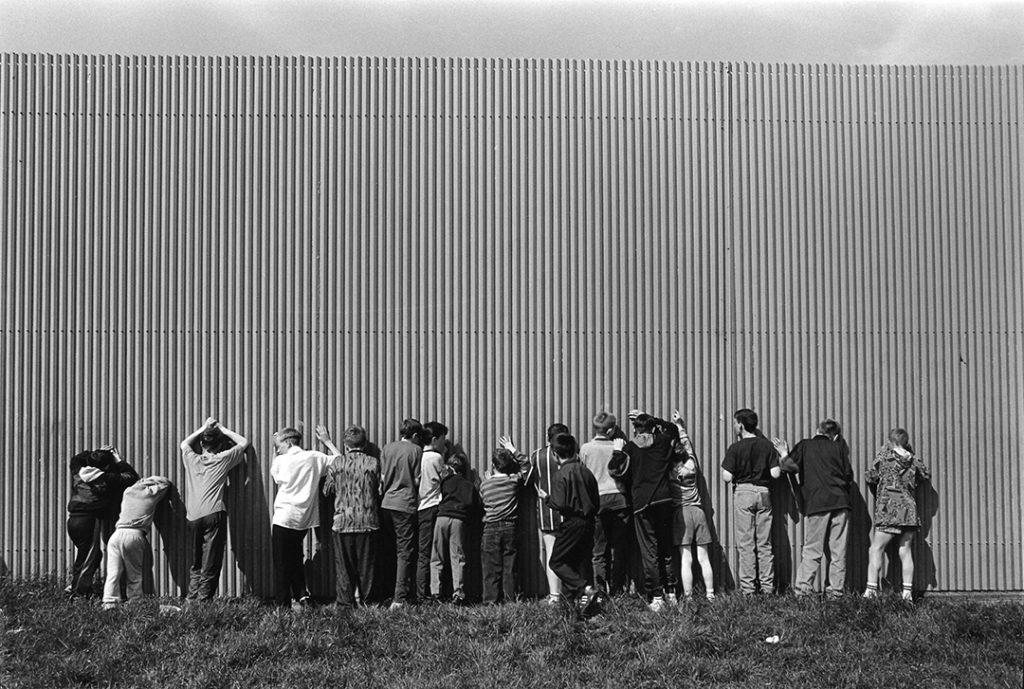
I have always seen the walls as a concrete manifestation of the unresolved legacy of the conflict, and like other persistent remnants of the conflict, curiously both visible and invisible at the same time. It is my conviction as an outsider who continues to be at the same time fascinated but also shocked and scandalised by the continued presence of the walls, that they are a matter of concern not only to local communities but to Northern Ireland as a whole and internationally. Through his work, increasingly widely recognised, Frankie Quinn has surely done more than any other group or individual to bring them to national and international attention.
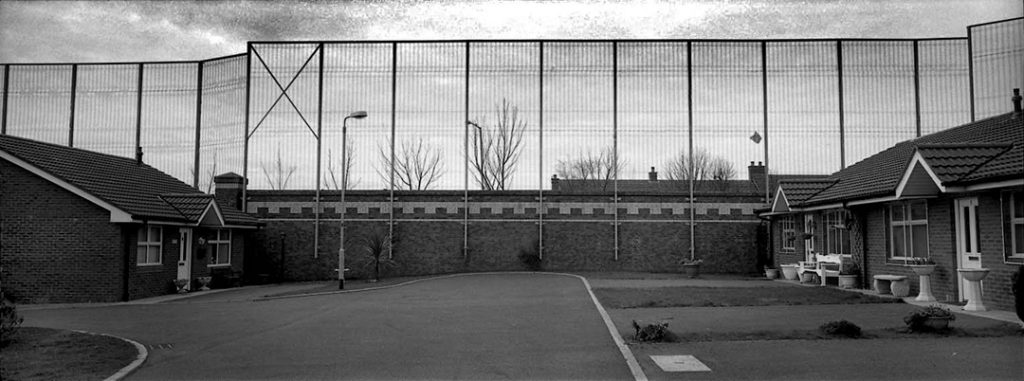
While Frankie Quinn’s previous three series of pictures were bleak, taken deliberately on dull and cloudy days, they recall a broader political context in which there was more hope. The third set were taken after the 2013 promise in Together Building a United Community by Martin McGuinness and Peter Robinson to bring down the peacewalls by 2023 – a promise that now seems to echo from a different century and different planet. However unrealistic that prediction always seemed, it did at least focus minds of communities and politicians on the existence of the walls and the need for determination to remove them. But the collapse of Stormont and Brexit have certainly made the removal of the walls — and attempts to address the wider legacies of the conflict — even more implausible. The colour and sunshine of these pictures cannot be read as an optimistic commentary. But they are a vibrant and potent signal of the work on the peace process in Northern Ireland that remains to be done.
Vicky Cosstick – Author of Belfast: Toward a City Without Walls (Colourpoint 2015).Essay written for the Belfast Exposed Publication “Cordon Sanitaire” which accompanies this exhibition.

